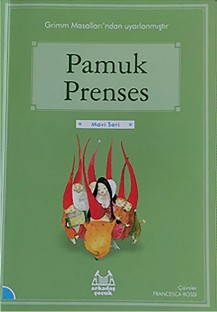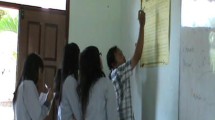Abstract
Texts carry traces of the language, social and cultural characteristics of both the period in which they were written and the period before them. Because of this, it is important to read intertextually in order to make sense of the text. The reader needs to discover the mystery revealed by the author during the intertextual reading process, and to know where the intertextual relationship begins and ends. While adult readers may notice the intertextual relationship due to their experience with the reading process, children may have more difficulty in this situation than adults. The activities that children do with their teachers are important in the process of discovering intertextual relationships. Children’s interaction with different text types and the questions asked to understand the text support the process of establishing relationships between texts. However, the activities for the discovery of intertextual relations differ for beginning or more skilled readers. In this study, sample activities that can help beginning and advanced readers to discover intertextual relationships are presented to teachers to enable students to discover the relationships between texts, to construct meaning through questions, and to use cognitive processes.




Similar content being viewed by others
References
Aktulum, K. (2014). Intertextual relations. Ankara: Kanguru Publishing.
Akyol, H. (2014). Turkish teaching methods (7th Ed.). Ankara: Pegem Academy Publishing.
Aliagas, C., and Margallo, A.M. (2017). Children’s Responses to the Interactivity of Storybook Apps in Family Shared Reading Events Involving the iPad. Literacy, 51(1), 44–52. https://doi.org/10.1111/lit.12089.
Allen, G. (2000). Intertextuality. London: Routledge.
Ateş, S. (2013). From Peritextual Reading to Intertextual Reading in Elementary School: Reading Picturebooks. International Journal of Human Sciences, 10(1), 1567–1585.
Bahtin, M.M. (2014). The Dialogic Imagination/Speech Genres & Other Late Essays (Cem Soydemir, Trans.). İstanbul: Ayrıntı Publishing.
Beach, R., and Anson, C.M. (1992). Stance and İntertextuality in Written Discourse. Linguistics and Education, 4(3–4), 335–357. https://doi.org/10.1016/0898-5898(92)90007-J.
Becker-Leckrone, M. (2005). Julia Kristeva and Literary Theory. London: Macmillan International Higher Education.
Bloome, D., and Hong, H. (2013). Reading and İntertextuality. In Carol A. Chapelle (Ed.), The Encyclopedia of Applied Linguistics. Hoboken: Blackwell Publishing Ltd.
Choi, M.S., and Rhoades, M. (2020). Ways of Seeing Through Desk Critique: İntertextuality as a Pedagogical Tool for Learning Opportunities. Teaching in Higher Education, https://doi.org/10.1080/13562517.2020.1759527.
Çeçen, M., & Doğan, B. (2014). Examining reading culture-themed texts in Turkish textbooks of elemantary school in terms of intertextuality Journal of Mother Tongue Education, 2(3), 122–134.
Çetinkaya, F. Ç., Durmaz, M., & Sönmez, M. (2019). An example of intertextuality: Variants of little red riding. Kırşehir Eğitim Fakültesi Dergisi, 20(3), 1148–1174.
Durmuş, G. (2018). Evaluation of reading activities in secondary school 5th grade Turkish course book (2017) in terms of intertextuality. Electronic Turkish Studies, 13(11). https://doi.org/10.7827/TurkishStudies.13362.
Elkad-Lehman, I. (2005). Spinning a Tale: Intertextuality and İntertextual Aptitude. L1-Educational Studies in Language and Literature, 5(1), 39–56.
Elkad-Lehman, I., and Greensfeld, H. (2011). Intertextuality as an Interpretative Method in Qualitative Research. Narrative Inquiry, 21(2), 258–275. https://doi.org/10.1075/ni.21.2.05elk.
Gambrell, L.B. (2011). Seven Rules of Engagement: What’s Most Important to Know About Motivation to Read. The Reading Teacher, 65(3), 172–178. https://doi.org/10.1002/TRTR.01024.
Güler, V. (2018). Intertextuality in Creative Texts of 8th Grade Students (Publication No. 504603) [Master’s thesis, Fırat University]. Council of Higher Education Thesis Center.
Hartman, D.K. (1992). Intertextuality and Reading: The Text, the Reading, the Author, and the Context. Linguistic and Education., 4, 295–311.
Jesson, R., McNaughton, S., & Parr, J. M. (2011). Drawing on intertextuality in culturally diverse classrooms: Implications for transfer of literacy knowledge. English Teaching: Practice and Critique, 10(2), 65–77. https://eric.ed.gov/?id=EJ944898.
Karatay, H. (2014). Reading education (2nd Ed.). Ankara: Pegem Academy Publishing.
Kolcu, S. (2017). An Evaluation on İntertextuality Qualification of Secondary School Turkish Course Books (Publication No. 463112) [Master’s thesis, Mustafa Kemal University]. Council of Higher Education Thesis Center.
Lancia, P. (1997). Literary Borrowing: The Effects of Literature on Children’s Writing. The Reading Teacher, 50(6), 470–475.
Lehr, S. (1990). Literature and the Construction of Meaning: The Preschool Child’s Developing Sense of Theme. Journal of Research in Childhood Education, 5(1), 37–46. https://doi.org/10.1080/02568549009594801.
Lundin, A. (1998). Intertextuality in Children’s Literature. Journal of Education for Library and Information Science, 39(3), 210–213. https://doi.org/10.2307/40324158.
Manak, J. (2011). The Social Construction of Intertextuality and Literary Understanding: The Impact of Interactive Read-Alouds On the Writing of Third Graders During Writing Workshops. Reading Research Quarterly, 46(4), 309.
Nikolajeva, M. (1996). Children’s Literature Comes of Age. London: Routledge.
Olsen, A.W., VanDerHeide, J., Goff, B., and Dunn, M.B. (2018). Examining Intertextual Connections in Written Arguments: A Study of Student Writing as Social Participation and Response. Written Communication, 35(1), 58–88. https://doi.org/10.1177/0741088317739557.
Pantaleo, S. (2003). Exploring Grade 1 Students’ Textual Connections. Journal of Research in Childhood Education, 18(3), 211–225. https://doi.org/10.1080/02568540409595036.
Pintrich, P.R. (2003). A Motivational Science Perspective on the Role of Student Motivation in Learning and Teaching Contexts. Journal of Educational Psychology, 95, 667–686. https://doi.org/10.1037/0022-0663.95.4.667.
Poeschl, B. L. (2018). The Pedagogy of İntertextuality, Genre, and Adaptation: Young Adult Literary Adaptations in the Classroom. [Undergraduate Thesis, Eastern Illinois University]. The Keep. https://thekeep.eiu.edu/cgi/viewcontent.cgi?article=1131&context=honors_theses.
Republic of Turkey Ministry of National Education Board of Education. (2019). Turkish Language Teaching Program (Primary & Secondary 1, 2, 3, 4, 5, 6, 7 & 8th Grades) Curriculum. Ankara: Devlet Kitaplari Mudurlugu Basim Evi.
Segev-Miller, R. (2007). Cognitive Processes in Discourse Synthesis: The Case of Intertextual Processing Strategies. In M. Torrance, D. Galbraith and L. Van Waes (Eds.), Writing and Cognition: Research and Application (pp. 231–250). Amsterdam: Elsevier.
Shegar, C., and Weninger, C. (2010). Intertextuality in Preschoolers’ Engagement with Popular Culture: Implications for Literacy Development. Language and Education, 24(5), 431–447. https://doi.org/10.1080/09500782.2010.486861.
Shonoda, M.A. (2012). Metaphor and İntertextuality: A Cognitive Approach to İntertextual Meaning-Making in Metafictional Fantasy Novels. International Research in Children’s Literature, 5(1), 81–96. https://doi.org/10.3366/ircl.2012.0045.
Short, K.G. (1992). Researching Intertextuality Within Collaborative Classroom Learning Environments. Linguistics and Education, 4(3–4), 313–333. https://doi.org/10.1016/0898-5898(92)90006-I.
Sipe, L. R., and ve Brightman, A. E. (2005). Young Children’s Visual Meaning-Making During Readalouds of Picture Storybooks. National Reading Conference Yearbook 54, 349–361.
Sipe, L.R. (2001). A Palimpsest of Stories: Young Children's Construction of Intertextual Links Among Fairytale Variants. Reading Research and Instruction, 40(4), 333–352. https://doi.org/10.1080/19388070109558354.
Torr, J. (2007). The Pleasure of Recognition: Intertextuality in the Talk of Preschoolers During Shared Reading with Mothers and Teachers. Early Years, 27(1), 77–91. https://doi.org/10.1080/09575140601135163.
Tracey, D.H., and Morrow, L.M. (2012). Lenses on Reading: An Introduction to Theories and Models, 2nd ed. New York: Guilford Publications.
Truman, S. E., McLean Davies, L., & Buzacott, L. (2021). Disrupting İntertextual Power Networks: Challenging Literature in Schools. Discourse: Studies in the Cultural Politics of Education, 1–14. https://doi.org/10.1080/01596306.2021.1910929.
Tutkun, Y. (2019). An Action Research on the Use of İntertextuality in Turkish Teaching: Seventh Grade Sample (Publication No. 581960) [Master’s thesis, Yıldız Teknik University]. Council of Higher Education Thesis Center.
Tüfekçi Can, D. (2012). A Study on Children Literature: Definitions, Genres and Theories (Publication No. 314170) [Doctoral dissertation, Ege University]. Council of Higher Education Thesis Center.
Ulusoy, M. (2016). Picturebooks and Reading Response Theory. Ilkogretim Online, 15(2).
Weippert, T.L., Domke, L.M., and Apol, L. (2018). Creating a Third Space Through Intertextuality: Using Children’s Literature to Develop Prospective Teachers’ Critical Literacy. Journal of Language and Literacy Education, 14(2), n2.
Wigfield, A., and Guthrie, J.T. (1997). Relations of Children’s Motivation for Reading to the Amount and Breadth of Their Reading. Journal of Educational Psychology, 89(3), 420–432. https://doi.org/10.1037/0022-0663.89.3.420.
Wilkie-Stibbs, C. (2005). Understanding Children’s Literature (2nd Edition). In Peter Hunt (Ed.), Relating Texts: Intertextuality (pp. 170–174). London: Routledge.
Yıldız, M., & Akyol, H. (2011). The Relationship Between 5th Graders' Reading Comprehension, Reading Motivation and Reading Habits. Gazi Üniversitesi Gazi Eğitim Fakültesi Dergisi, 31(3), 793–815.
Children’s Literature Cited
de Saint-Exupéry, A. (2019). Le Petit Prince (Ayberk Erkay, Trans. Ankara: Yapı Kredi Publishing.
Grimm Brothers. (2020). Snow White and the Seven Dwarfs (Zeynep Atayman, Trans. & Mustafa Delioğlu, Illus.). Ankara: Bordo Siyah Publishing.
Çevikoğlu, M. (2016). Snow White] (Simona Cordero, Illus.). Ankara: 1001 Çiçek Publishing.
Grimm Brothers (2018). Snow White (Güçlü Özkök, Trans. & Mayalen Goust, Illus.). Ankara: Mavi Kelebek Publishing.
Jardin, A. (2020). Don't Eat That Apple, Snow White (Güçlü Özkök, Trans. & Hervé Le Goff, Illus.). Ankara: 1001 Flower Publishing.
Funding
The author did not receive support from any organization for the submitted work.
Author information
Authors and Affiliations
Corresponding author
Ethics declarations
Conflict of interest
The author has no relevant financial or non-financial interests to disclose.
Ethical Approval
The research has been done in adherence to ethical guidelines.
Consent to Participate
Not applicable.
Children's Literature
Exploring Intertextual Relationships.
Additional information
Publisher's Note
Springer Nature remains neutral with regard to jurisdictional claims in published maps and institutional affiliations.
Esra Sever Serezli: Principal research interests are in children literature, intertextuality, process-based writing models, difficulty reading and writing, and collaborative writing.
Rights and permissions
Springer Nature or its licensor (e.g. a society or other partner) holds exclusive rights to this article under a publishing agreement with the author(s) or other rightsholder(s); author self-archiving of the accepted manuscript version of this article is solely governed by the terms of such publishing agreement and applicable law.
About this article
Cite this article
Sever Serezli, E. Children’s Literature: Exploring Intertextual Relationships. Child Lit Educ (2023). https://doi.org/10.1007/s10583-022-09522-8
Accepted:
Published:
DOI: https://doi.org/10.1007/s10583-022-09522-8




